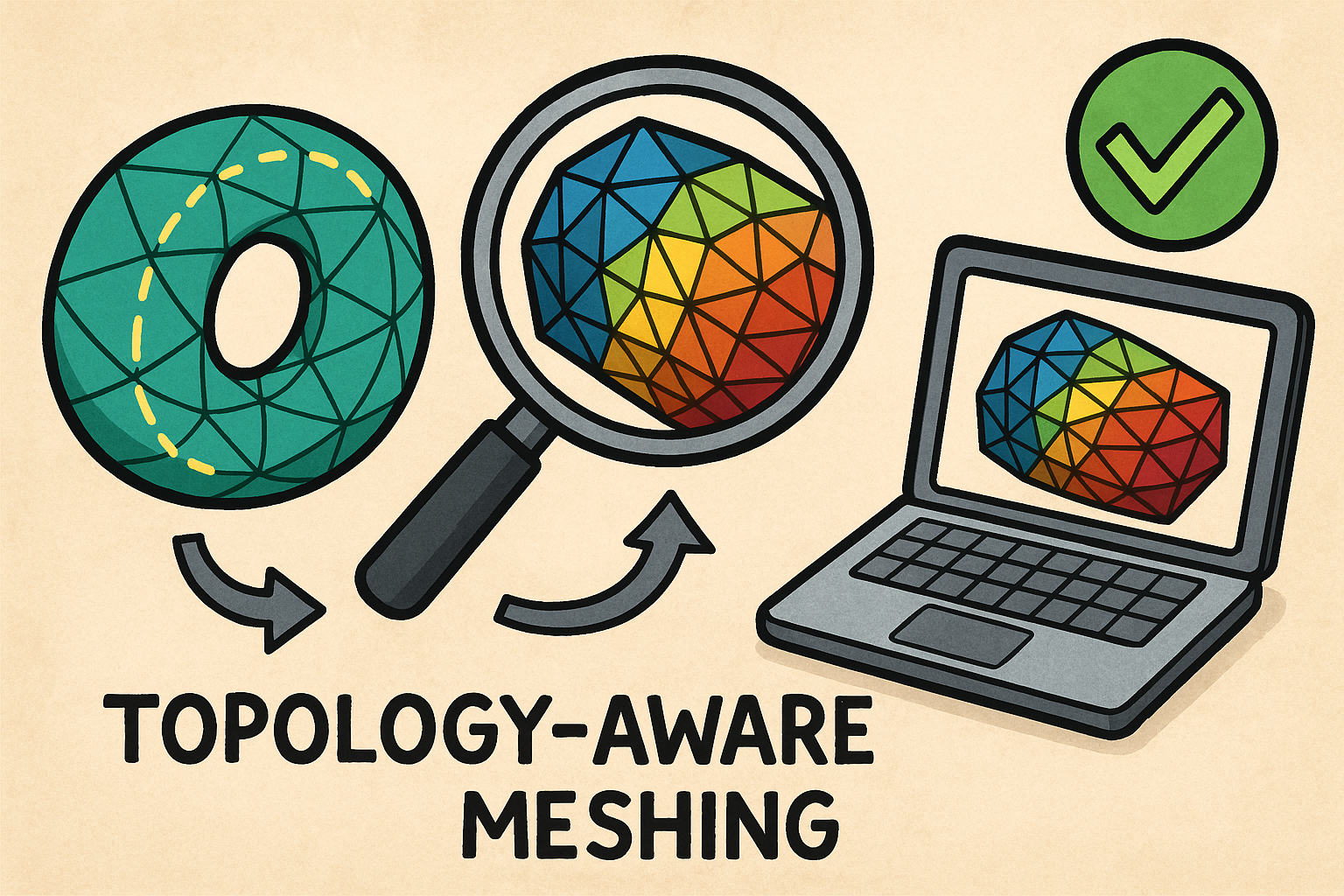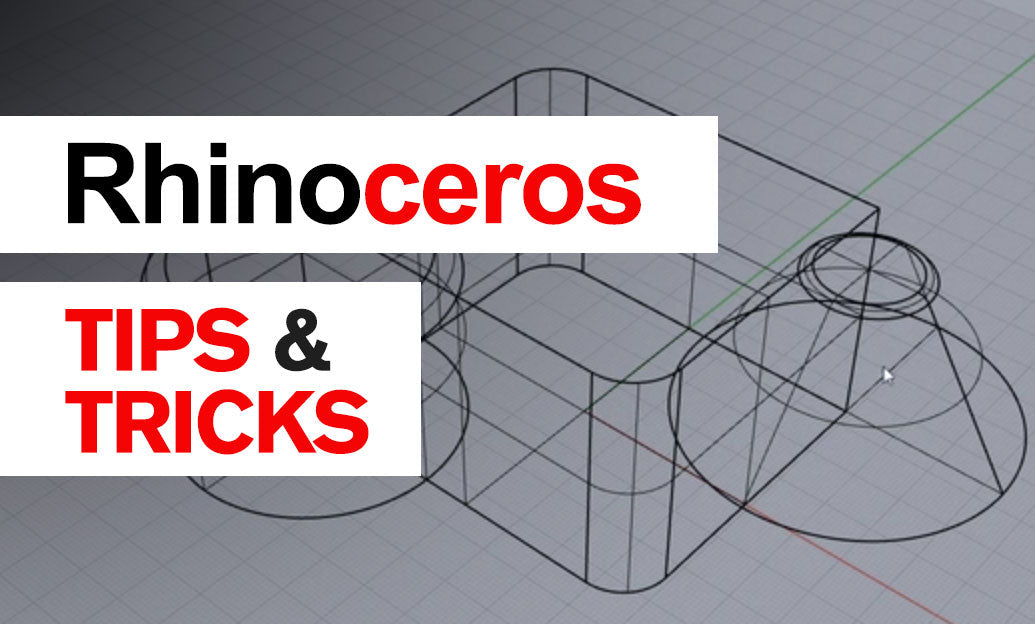Your Cart is Empty
Customer Testimonials
-
"Great customer service. The folks at Novedge were super helpful in navigating a somewhat complicated order including software upgrades and serial numbers in various stages of inactivity. They were friendly and helpful throughout the process.."
Ruben Ruckmark
"Quick & very helpful. We have been using Novedge for years and are very happy with their quick service when we need to make a purchase and excellent support resolving any issues."
Will Woodson
"Scott is the best. He reminds me about subscriptions dates, guides me in the correct direction for updates. He always responds promptly to me. He is literally the reason I continue to work with Novedge and will do so in the future."
Edward Mchugh
"Calvin Lok is “the man”. After my purchase of Sketchup 2021, he called me and provided step-by-step instructions to ease me through difficulties I was having with the setup of my new software."
Mike Borzage
Design Software History: From Kinematics Add‑Ons to Industrial Multibody Dynamics: Algorithms, Applications, and Design Integration
November 19, 2025 13 min read


Origins: from kinematics add‑ons to industrial multi‑body dynamics (MBD)
Academic foundations
Before commercial vibration benches and glossy motion plug‑ins, the DNA of modern multi‑body dynamics was written in classrooms and lab notebooks. Mechanism theorists built the first bridges, from Franz Reuleaux’s inversions and Freudenstein’s kinematic synthesis to the compact motion descriptions that later proved computable at scale. In that lineage, Thomas R. Kane and David A. Levinson made a decisive contribution: Kane’s method reframed equations of motion using minimal sets of generalized speeds and partial velocities, stripping away redundant coordinates that had dogged classical Lagrangian forms. This economy of description turned out to be perfect for software: fewer coordinates meant fewer unknowns, better conditioning, and faster Jacobians—features that mapped directly to sparse numerical linear algebra and made scalable simulation plausible on the workstations of the 1980s and 1990s. Meanwhile, Roy Featherstone’s articulated‑body algorithm (ABA) established O(n) forward dynamics for tree structures, illustrating that careful exploitation of multibody topology could trump brute force.
Cross‑pollination with robotics created a two‑way conduit. Denavit–Hartenberg parameterizations, spatial algebra, and Newton–Euler recursion from the robotics literature seeped into general‑purpose MBD. Conversely, mechanism theory enriched robot dynamics with better constraint handling and loop closures. Ahmed A. Shabana’s flexible multibody formulations and component mode methodologies seeded the later rigid‑flex era. Constraint stabilization also took shape academically: J.P. Baumgarte’s stabilization introduced a proportional–derivative correction in the constraint space; projection methods and index reduction techniques tamed the high‑index differential‑algebraic equations (DAEs) intrinsic to constrained motion. This scientific substratum—minimal coordinates, structured algorithms, and constraint calculus—became the template that the first generations of industrial codes would implement, optimize, and industrialize at scale.
First commercial waves (1970s–1990s)
By the late 1970s, research code left academia and landed on shop floors. In Ann Arbor, Mechanical Dynamics, Inc. released ADAMS, soon synonymous with industrial multibody simulation. Car makers adopted it for suspensions, steering, and ride and handling; powertrain and gear train libraries followed. ADAMS later became MSC.ADAMS after MSC Software’s acquisition, tying motion to the company’s established structural analysis base. CADSI’s DADS was widely used through the 1990s, particularly in aerospace and machinery; that line ultimately folded into LMS International’s portfolio and then into Siemens after LMS’s acquisition, reinforcing what is now the Simcenter ecosystem. In Germany, INTEC GmbH’s SIMPACK found a foothold in rail vehicle dynamics, wind energy, and powertrain modeling; Dassault Systèmes acquired it and integrated it into SIMULIA, a move that anchored a strong dynamics capability next to CATIA and Abaqus.
Not all momentum was high‑end. Knowledge Revolution’s Working Model 2D democratized planar mechanism studies for students and designers. Its approachable interface, interactive constraints, and instantly visible force vectors transformed whiteboard sketches into dynamic experiments. MSC later acquired Knowledge Revolution; one of its founders, David Baszucki, went on to start Roblox, an unlikely but emblematic reminder that intuitive physics sandboxes can inspire broad communities. Across this spectrum, the hallmark of the era was a shift from batch, expert‑only dynamics to tools that designers could actually touch—without sacrificing the algorithmic rigor that the critical automotive, rail, and aerospace use cases demanded.
Typical early applications and domain drivers
The earliest industrial beachheads were domains where geometry, stiffness, and loads choreographed complex motion envelopes that were hard to infer from static drawings. In automotive, kinematic and compliance studies of double‑wishbone and multi‑link suspensions, steering systems, and bushings drove adoption; the ability to sweep bump and rebound, plot toe and camber curves, and compute ride comfort metrics made MBD indispensable. Powertrain teams modeled drivelines, torsional vibration, and gear trains—including backlash and contact forces—anticipating NVH and durability concerns. Rail vehicle dynamics embraced SIMPACK for hunting stability, wheel–rail contact, and curving behavior, where contact geometry and friction demanded careful numerics. Aerospace engineers simulated landing gear kinematics, retraction mechanisms, and shock struts, marrying dynamics with hydraulic actuator models to meet safety margins.
Machinery linkages, cams, and followers benefited from rapid mechanism synthesis loops—sizing dwell times, contact stresses, and follower acceleration to manage wear and noise. Across industries, early “killer apps” shared a motif: closed‑loop mechanisms, intermittent contact, and compliance elements that the pencil‑and‑paper era oversimplified. MBD brought parametric studies, configuration libraries, and executable specifications. That made it possible to replace rule‑of‑thumb approximations with model‑based exploration at the speed of design iteration. The broader effect was cultural: motion ceased to be an afterthought appended to finalized geometry; it became a formative constraint shaping that geometry from the first assembly concept onward.
Inside the engines: models, numerics, and contact
System formulations
Under the hood, multibody engines must choose a coordinate philosophy. Joint‑space formulations keep all body coordinates plus algebraic constraints enforced through Lagrange multipliers or penalty forces, producing DAEs that retain the assembly’s physical topology. Minimal‑coordinate approaches eliminate redundancy up front—often via Kane’s method—and evolve only independent generalized speeds. Each has tradeoffs: full coordinates simplify kinematic loops and contact but require constraint stabilization; minimal coordinates yield smaller systems but complicate loop closures and change detection. Stabilization techniques include Baumgarte stabilization, which adds proportional–derivative corrections to constraint drift; projection methods that re‑snap states to the constraint manifold at each step; and penalty formulations that trade exact constraint satisfaction for tunable stiffness and numerical conditioning. In practice, commercial codes mix and match: one can see minimalist trees nested inside loop closures treated with cut‑joints and algebraic correction.
Events are first‑class citizens. Impacts, unilateral constraints, clutch engagements, and joint limits introduce discontinuities that demand event detection, state updates, or time‑stepping schemes tolerant of impulses. With DAEs typically of index‑3 or higher, index reduction (differentiating constraints or reformulating as index‑1 systems) is common to enable stable integrators. Algorithmic staples—Newton–Euler recursion for inverse dynamics, Featherstone’s articulated‑body method for forward dynamics on trees, and sparse factorization of constraint Jacobians—shape performance. Closed loops reappear as “cuts” that enforce closure via constraints or by small sets of dependent coordinates. The result is not a single algorithm, but a pragmatic toolkit tuned to problem structure, marrying local coordinate choices to global solution strategies that deliver robustness across the sprawling problem families engineers actually face.
Time integration and stiffness handling
Once formulated, dynamics must be integrated without erasing physics or blowing up step sizes. Variable‑step backward differentiation formulas (BDF/Gear) are mainstays because they handle stiffness and DAEs gracefully, especially when constraints and high stiffness elements coexist. Structural dynamics veterans will recognize Newmark and Hilber–Hughes–Taylor (HHT) families, which can be adapted to constrained systems and tuned for numerical dissipation in high‑frequency modes that would otherwise pollute long transients. Explicit and embedded Runge–Kutta variants show up in minimal‑coordinate or index‑reduced formulations where stiffness is manageable. The modern motif is energy and momentum awareness: symplectic or momentum‑preserving schemes pay dividends on long trajectories, avoiding energy drift that ruins steady‑state predictions.
Flexible bodies add another layer. The industry workhorse is component mode synthesis (Craig–Bampton), which retains a subset of fixed‑interface modes and adds static constraint modes to represent boundary deformation. That furnishes a compact basis for rigid–flex coupling: joint forces from the multibody solver feed deformations, and flexible reactions feed back into the motion. The numerics must now juggle multiple time scales—hard bushing stiffness and compliant modes coexisting with slow actuation. Common practice includes mode truncation guided by participation factors, selective damping, and sub‑cycling for stiff subsystems. The prize is large: directly predicting joint forces for durability, stress “hot spots” under motion, and the deformation‑induced kinematics (e.g., compliance steer) that often control product feel and wear.
Contact, friction, and collision detection
Frictional contact is the crucible where elegant theory meets messy reality. Many industrial solvers model nonpenetration and Coulomb friction with complementarity formulations: inequalities couple normal forces to gaps, while friction cones relate tangential forces to slip velocities. Discretized in time, they become linear or nonlinear complementarity problems (LCP/NCP). The Stewart–Trinkle and Anitescu–Potra time‑stepping schemes allow impulses and ensure well‑posed updates without brittle event calendars. Real systems are riddled with stick–slip transitions, micro‑bounces, and contact patch evolution; practical engines deploy regularization, warm‑starting, and friction cone linearization to keep the algebra solvable and physical. Where compliance is acceptable, penalty springs/dashpots with velocity‑dependent friction smooth the numerics, trading exactness for speed.
Collision detection is the other half. Broad‑phase acceleration structures—axis‑aligned (AABB) and oriented (OBB) bounding volume hierarchies—cull pairs early; narrow‑phase routines like GJK/EPA deliver closest features for convex shapes, while triangle soups approximate complex surfaces when CAD B‑reps are tessellated. Production pipelines stitch CAD to dynamics via meshing, feature tagging (contactable vs. non‑contactable), and tolerances that absorb modeling imperfections. The nuance is practical: triangle resolution affects contact stiffness and chatter; thin features invite tunneling unless continuous collision detection is used; and CAD edits must propagate to collision proxies without silently invalidating contact points. Done well, contact becomes a controllable modeling ingredient rather than a chaotic source of solver failures.
Parameterization and templates
Industrial MBD matured when it stopped being a general equation engine and started speaking the language of domains. Toolkits like Adams/Car expose suspension templates with kinematic points, bushing maps, and tire interfaces. Cam and gear libraries encapsulate tooth geometry, backlash, and mesh stiffness, letting engineers swap parametric components without rebuilding constraints. Tires are data‑hungry: Pacejka “Magic Formula” and MF‑Tyre families feed force/moment models; rigid‑ring or flexible‑ring variants couple to road profiles and thermal states. Bushings become 6×6 stiffness/damping tables with rate/hysteresis effects. Powertrain templates model torsional compliance and clutch friction; drivetrain topologies are captured as graphs the solver can traverse.
This parameterization aligns with measurement pipelines. Multi‑post rigs, K&C (kinematics and compliance) data, and test track maneuvers populate model parameters; the software provides regressors, DOE tools, and uncertainty handling to bind test and simulation. In practice, product teams rely on: (1) domain‑specific templates to avoid re‑deriving joints; (2) validated component models to ensure believable loads; and (3) libraries of proving‑ground scenarios to repeatedly probe the system. As these pieces crystallized, MBD shifted from analysis to a shared, executable vocabulary of product behavior—one that let organizations reuse knowledge and scale expertise across platforms and model years.
From stand‑alone solvers to features inside design tools
How CAD assemblies become mechanisms
The revolution in daily practice arrived when CAD assemblies could move purposefully. The conceptual step was simple but profound: map CAD mates to canonical joints—revolute, prismatic, cylindrical, planar, spherical—and audit degrees of freedom and redundancies. A well‑designed tool reports under‑ and over‑constraint, suggests joint reductions, and visualizes the constraint graph so engineers can see why a mechanism binds. Constraints that are ambiguous in CAD (e.g., coincident planes plus parallel axes) become explicit joint primitives with known mobility. From there, trace curves and swept volumes turn motion into volumetric occupancy; clash checks become motion‑aware, catching interferences that only occur along a trajectory rather than in a static pose. Safety clearances and manufacturability are tested with motion envelopes during design, not after a prototype collides on the shop floor.
Closing the loop is as much UX as math. Designers want to drag a part and have the rest of the assembly follow legal motion; they expect motors and springs to be as easy to place as mates. The best systems auto‑insert grounded frames, pick sensible joint axes from geometry, and surface numerical issues early (e.g., tiny lever arms that poison torque calculations). Useful by‑products include: (1) motion‑derived measurements—stroke, velocity profiles, torque requirements; (2) position‑based mass properties like swept volume inertia; and (3) change impact analysis that flags features whose edits would alter mobility. In effect, assemblies become testbeds where geometry and dynamics inform each other in the same interface, shrinking iteration cycles dramatically.
Embedded and connected products
By the late 2000s, major CAD platforms shipped motion as a first‑class feature. SolidWorks Motion (within Dassault Systèmes’ ecosystem), Autodesk Inventor Dynamic Simulation, PTC Creo Mechanism, Siemens NX Motion, and CATIA DMU Kinematics provide pathways from mates to joints, motor placement, and basic force evaluation. Deeper stacks connect to Simcenter 3D Motion on the Siemens side and to SIMULIA on the Dassault side, bringing advanced numerics, flexible bodies, and contact to bear when assemblies outgrow the CAD‑resident solvers. The connection tissue is crucial: users move smoothly from quick kinematics and loads to full, high‑fidelity dynamics without rebuilding models from scratch.
Mechanics rarely lives alone; mechatronics needs co‑simulation. Robotics and control teams export CAD kinematics to Simscape Multibody (formerly SimMechanics), Modelica tools like Dymola and MapleSim, and FMU components via the Functional Mock‑up Interface (FMI). CAD‑to‑robot pipelines emit URDF/SDF for ROS, injecting mechanical truth into motion planning and control stacks. Co‑simulation handles motors, sensors, and controllers while the multibody core solves the geometry and loads. The practical result is continuity: a mechanism modeled once can participate in physics‑based animation, control design, and detailed dynamic analysis, each at the right fidelity and in the right toolchain.
Workflows that changed daily practice
Motion embedded in design environments opened workflows that once required niche expertise. Designers now perform design‑in‑the‑loop sizing of motors and actuators by extracting torque and power envelopes from actual duty cycles, not worst‑case guesses. Joint forces and moments are computed and exported to FEA, where shell and solid models check fatigue against real transients. Rigid‑flex coupling lets teams study deformation‑induced kinematics, predicting issues like compliance steer or belt whip before metal is cut. Mechanism synthesis—gearing ratios, cam profiles, dwell timing—can be iterated with the actual assembly, guided by optimization and constraint solvers rather than trial‑and‑error.
Tolerance studies ride on top of motion. Monte Carlo variations of hole locations, bushing stiffness, and friction coefficients reveal yield and sensitivity; drive‑cycle libraries encapsulate proving‑ground maneuvers (sine‑with‑dwell, potholes, hill starts) so loads are comparable across designs and releases. Teams capture best‑practice templates: a steering rack model or a valve train library that any new project can reuse. Collectively, these workflows shorten the path from intent to insight. They also harden decisions: when a dimension, material, or supplier changes, load paths and performance metrics update with the assembly—evidence replaces anecdote as the backbone of design acceptance.
Open and research ecosystems
Parallel to commercial stacks, a vigorous open ecosystem has advanced the state of the art and broadened access. Project Chrono, led by Alessandro Tasora and Dan Negrut, offers high‑fidelity contact, flexible bodies, and GPU acceleration for granular and vehicle dynamics. Drake, from Russ Tedrake’s group, blends multibody dynamics with optimization and control, pioneering differentiable physics and robust contact formulations that support gradient‑based design and motion planning. The Dynamic Animation and Robotics Toolkit (DART) and the Bullet physics library bridge computer graphics and engineering, proving that fast, robust contact and articulated dynamics are invaluable beyond traditional CAD—think simulation‑heavy robotics and interactive virtual environments.
Robotics workflows pivot on interchange standards. URDF and SDF, coupled with ROS, let CAD models become kinematic trees and collision proxies suitable for planning, control, and simulation. Mesh processing, convex decomposition, and mass property extraction have become standard steps in CAD‑to‑robot pipelines. Academic and industrial groups iterate rapidly because the tooling is scriptable, testable, and open. This cross‑fertilization pays off for design too: better collision detection, faster contact solvers, and differentiable modeling flow back into CAD‑adjacent tools, blurring lines between “engineering” and “graphics” in the best possible way.
Conclusion: what history unlocked—and what’s next
Motion moved from specialist post‑processing to a design‑time companion
The enduring achievement of the last four decades is cultural as much as technical. Where motion analysis was once a specialist post‑processing step applied long after geometry froze, it is now a design‑time companion. In practice, that means mates became joints, assemblies became testbeds, and load paths informed geometry early enough to matter. Templates encapsulate domain knowledge—suspension kinematics, gear mesh behavior, tire forces—so that concept sketches acquire realistic dynamics with minimal clerical work. Designers obtain physically grounded answers—required torque, peak reaction loads, swept volumes—without handing the model to a separate team. That shift compresses iteration cycles and prevents expensive late surprises by surfacing interference, over‑constraint, and actuator shortfalls when they are still cheap to fix.
Equally important is the visibility of intent. By linking requirements (lift capacity, clearance, comfort) to motion metrics and loads in a single model, teams create traceability that survived tool and personnel changes. CAD and MBD have converged sufficiently that you can change a dimension and immediately see downstream effects on motion envelopes, stresses, and even control laws. This is more than convenience; it is a different epistemology of design—one that treats dynamic performance as a first‑class specification rather than an afterthought appended to a drawing. The history is a reminder that usability and numerical rigor need not be at odds when abstractions make the right choices invisible.
The hard problems persist at the frontier
Despite progress, the frontier remains challenging in ways that matter to products. Frictional contact is still fragile under dense contact networks, high aspect‑ratio features, and near‑singular friction cones; even with complementarity and time‑stepping, small modeling decisions can swing outcomes. Scalability is another pressure point: assemblies with thousands of joints, flexible substructures, and fine contact meshes strain memory bandwidth and solver robustness. Rigid–flex fidelity under real drive cycles—with multi‑rate actuators, controller interference, and thermal drift—demands models that do not simply predict loads once, but remain stable and believable across hours of simulated time. Uncertainty is rarely negligible; hysteresis, wear, and manufacturing variation can dominate behavior yet are hard to parameterize.
The computational substrate is evolving. Sparse direct methods are yielding ground to iterative solvers with physics‑aware preconditioners; GPUs and distributed memory are viable for contact‑heavy problems but require careful algorithmic redesign. Model reduction, adaptive meshing for contact, and surrogate models (learned or physics‑based) promise speed but pose validation burdens. And integration remains a human problem: keeping mechanical, electrical, and software models synchronized across toolchains and organizations tests process discipline as much as algorithms. In short, the difficult problems are not roadblocks; they are design spaces where careful modeling, better numerics, and smarter workflows still pay large dividends.
Emerging directions
Three vectors stand out. First, real‑time and hardware‑in‑the‑loop (HIL) variants are moving from labs into mainstream, especially in rail and automotive. Reduced, structure‑preserving dynamics combined with fast contact proxies let full vehicles run against actuator and controller hardware on benches. Second, cloud co‑simulation via FMI and SSP is maturing, enabling distributed teams to couple multibody models with power electronics, hydraulics, and control logic while keeping IP boundaries intact. That connects naturally to PLM: tighter traceability from requirement to motion metric, with automatic evidence capture and variant management, keeps programs coherent as architectures evolve. Third, the modeling front‑end is getting smarter. Automated joint inference and constraint repair from CAD intent reduce the clerical burden and eliminate errors that previously consumed expert time. Learning‑guided parameter studies propose promising regions of design space rather than brute‑forcing thousands of runs.
Perhaps most transformative is differentiable physics. Tools like Drake expose gradients of dynamics with respect to geometry, mass properties, and control inputs, enabling gradient‑based mechanism optimization and control co‑design at practical scales. Designers can simultaneously choose link lengths, bushing rates, and control gains to satisfy performance constraints, with adjoints and automatic differentiation providing sensitivities that would be infeasible by finite differences. Combine that with mixed‑fidelity models—rigid where possible, flexible where necessary—and you get safer, faster iteration loops. The common thread is feedback: models inform design decisions; designs inform models; and the loop closes with quantitative, trustworthy gradients.
Enduring lesson
The history of design‑integrated multibody dynamics teaches a clear lesson: the winning tools made numerics invisible and intent explicit. They let engineers specify what a mechanism must do—clear this envelope, carry that load, follow this trajectory—while silently choosing stable coordinates, robust integrators, and reliable contact handling. They bridged kinematics, dynamics, and design decisions without breaking the engineer’s mental model of the assembly. Every subsequent advance—domain templates, flexible body reduction, motion‑aware clash checks, co‑simulation, differentiable dynamics—has succeeded when it honored that principle. Looking ahead, the same compass applies. If automated joint inference, HIL, or gradient‑based synthesis surfaces intent more clearly while hiding algorithmic plumbing, adoption will follow. The trajectory from kinematics add‑ons to industrial MBD is not just a story of faster solvers; it is a story of modeling languages that speak the user’s dialect of physics, elevating motion from an analysis checkbox to a design philosophy.
Also in Design News

Topology-Aware Meshing: Preserving Homology, Quality, and Solver Reliability
November 19, 2025 12 min read
Read More
Rhino 3D Tip: Rhino Mesh Validation for 3D Printing, Simulation, and Visualization
November 18, 2025 2 min read
Read More
Cinema 4D Tip: Depth of Field Workflow for Cinema 4D and Redshift
November 18, 2025 2 min read
Read MoreSubscribe
Sign up to get the latest on sales, new releases and more …


